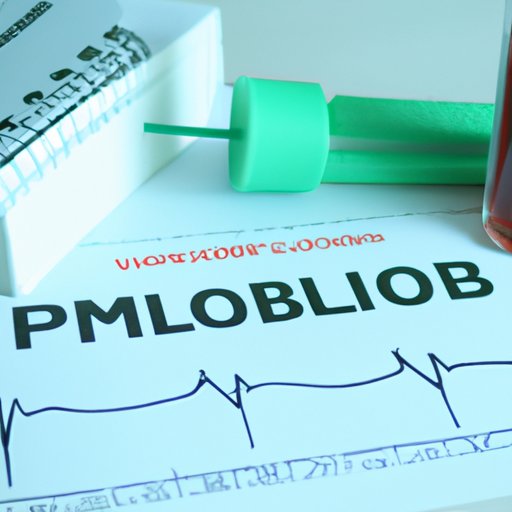Introduction
Phlebotomy is the practice of drawing blood from patients for medical testing, transfusions, or donations. It’s an important field in the healthcare industry, as blood samples are necessary for diagnosing and treating many medical conditions. Phlebotomists must be highly skilled and knowledgeable in order to safely and effectively draw blood, which is why they must pursue phlebotomy certification.
In this article, we’ll explore what it takes to become certified and how long it takes to get a phlebotomy certification. We’ll also provide a comprehensive guide to earning your certification and discuss what you need to know before pursuing it.
The Steps to Becoming a Certified Phlebotomist: What is the Timeline?
Before you even begin your phlebotomy certification process, there are a few prerequisites that must be met. These include having a high school diploma or equivalent, being at least 18 years old, and completing a phlebotomy program.
Once all of these requirements are met, you can move forward with the certification process. The first step is to complete a phlebotomy training program. This typically consists of classroom-based courses and clinical practice hours. During this time, you’ll learn all of the skills needed to become a certified phlebotomist, including anatomy, physiology, and safety protocols.
After completing the training program, you’ll need to prepare for the certification exam. This involves studying the material covered in the program, taking practice tests, and familiarizing yourself with the exam format. Once you feel confident, you can take the exam and become a certified phlebotomist.
A Comprehensive Guide to Earning Your Phlebotomy Certification and How Long it Takes
So, how long does it take to become certified? The answer depends on a few factors, such as the type of program you choose and how quickly you can progress through it. Generally speaking, it takes anywhere from 6 months to 1 year to complete the entire certification process.
Let’s break down the time frames for each step in the process. Completing the prerequisites and enrolling in a phlebotomy program can take anywhere from 2 weeks to 1 month. Depending on the program, the classroom-based courses may take up to 3 months to complete, while the clinical practice hours may take up to 4 months to finish. Finally, exam preparation and taking the exam can take up to 1 month.

A Breakdown of Phlebotomy Training Requirements and Time Commitment
Now that you have a better understanding of the timeline for becoming certified, let’s look at the individual components of the training program. Classroom-based courses typically cover topics such as anatomy, physiology, and safety protocols. This can take anywhere from 4 to 8 weeks to complete, depending on the program.
Clinical practice hours involve hands-on experience in a healthcare setting. This could include drawing blood from patients, preparing specimens for laboratory analysis, and interacting with patients. This part of the program usually takes between 8 to 12 weeks to complete.
Finally, exam preparation involves studying the material covered in the program, taking practice tests, and familiarizing yourself with the exam format. This can take up to 1 month to complete, depending on how much time you’re able to dedicate to studying.

What You Need to Know Before Pursuing Phlebotomy Certification: Time Frame Included
Pursuing phlebotomy certification is a big commitment both financially and time-wise. It’s important to understand the costs associated with the training program and the amount of time required to become certified. Be sure to research different programs to find one that fits your needs and budget.
It’s also important to choose the right program for you. Not all programs are created equal, so be sure to read reviews, compare curriculums, and talk to current students before making a decision. This will help ensure that you’re getting the best possible training.
Finally, once you’ve become certified, it’s important to find the right job. Look for positions that offer competitive salaries and benefits, as well as opportunities for growth and advancement. This will help ensure that your hard work pays off in the long run.
Conclusion
Becoming a certified phlebotomist requires dedication, time, and money. But with the right program and the right approach, you can earn your certification in as little as 6 months. Knowing the steps and timeline involved in the process can help you make an informed decision about pursuing phlebotomy certification.
We hope this article has provided you with the information you need to start your journey towards phlebotomy certification. Good luck!
(Note: Is this article not meeting your expectations? Do you have knowledge or insights to share? Unlock new opportunities and expand your reach by joining our authors team. Click Registration to join us and share your expertise with our readers.)
